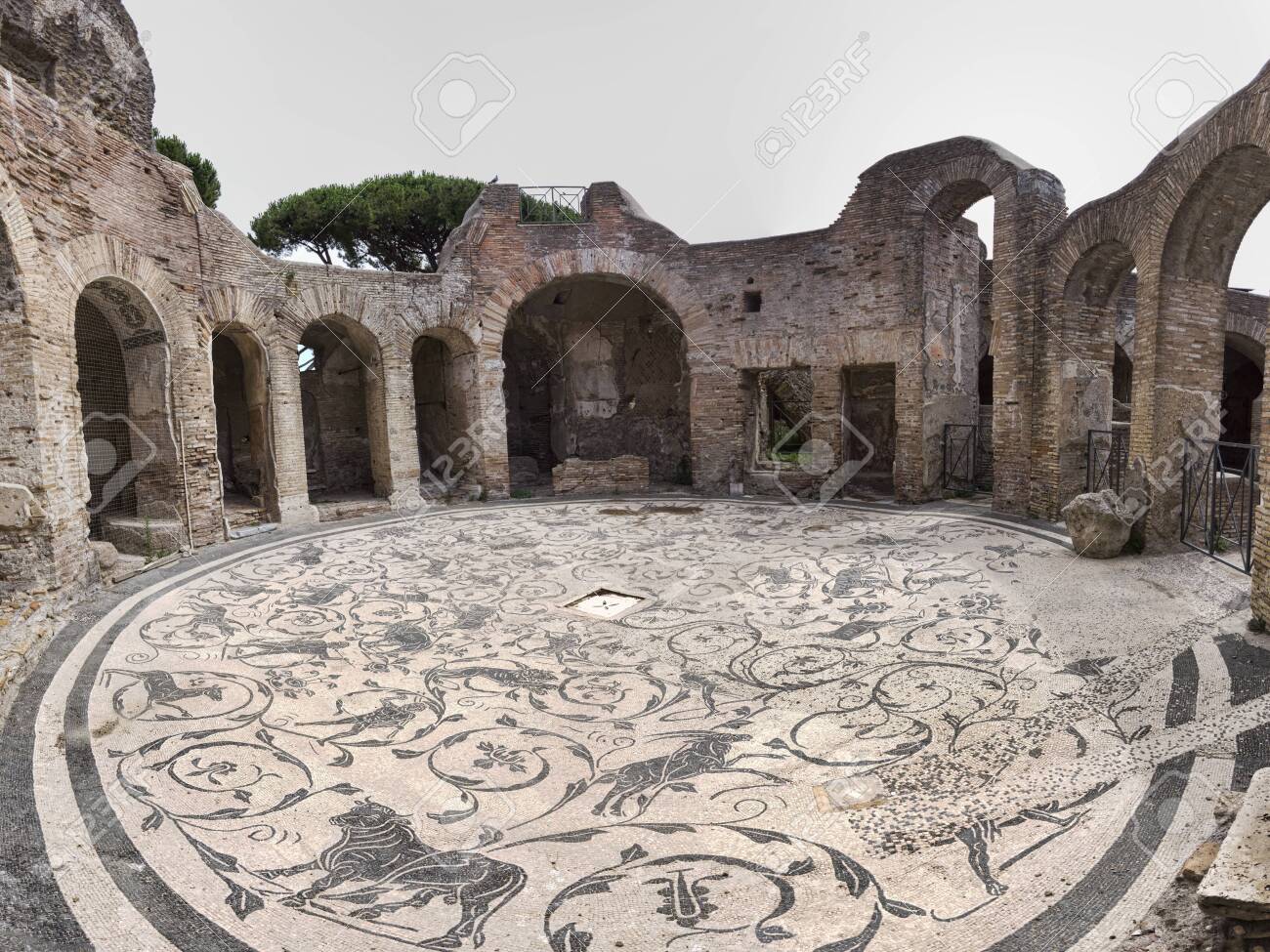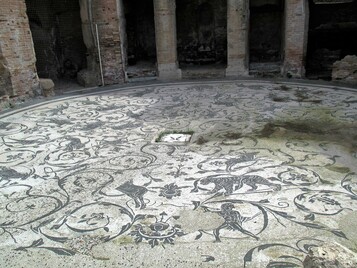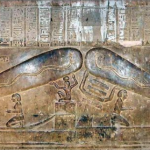A large floor mosaic from Ostia Antica’s Bath of the Seven Sages features a detailed black-and-white hunting scene.

At Ostia Antica, the ancient port city of Rome, there lies a magnificent artifact from the Bath of the Seven Wise Men: a massive floor mosaic. This stunning piece of art, created approximately 1,800 years ago, captures the attention of historians, archaeologists, and art enthusiasts alike. The mosaic is not just a testament to the skill and creativity of its ancient craftsmen, but also a vivid window into the past, offering a glimpse of the themes and aesthetics valued by the people of that era.
The floor mosaic is expansive and intricately detailed, showcasing an elaborate black and white hunting scene. This choice of subject matter reflects the importance of hunting in Roman culture, both as a practical activity and a symbol of power and nobility. The mosaic’s design is a marvel of ancient artistry, with each tiny tile, or tessera, meticulously placed to create a dynamic and lifelike representation of the hunt.

The scene depicted in the mosaic is rich with movement and vitality. It features a variety of animals, likely including wild boars, deer, and possibly even exotic creatures, being pursued by hunters. The hunters are shown in action, with detailed portrayals of their attire, weapons, and expressions. The black and white color scheme, though seemingly simple, adds a level of sophistication and timeless elegance to the mosaic. The contrast between the colors enhances the details and brings the scene to life, allowing viewers to appreciate the depth and complexity of the composition.
The Bath of the Seven Wise Men, where this mosaic is located, was an important social and cultural center in Ostia Antica. Public baths in ancient Rome were not only places for bathing but also venues for socializing, conducting business, and engaging in intellectual discussions. The presence of such a grand mosaic in the bath underscores the importance of art and beauty in public spaces and the value placed on communal experiences.

This mosaic is a remarkable example of the fusion of functionality and artistry in Roman architecture. It served as a decorative element that enhanced the aesthetic appeal of the bath while also conveying themes of strength, skill, and the human relationship with nature. The meticulous craftsmanship required to create such a detailed and enduring piece speaks to the high level of skill possessed by Roman artisans.
Today, the mosaic from the Bath of the Seven Wise Men remains a significant piece of cultural heritage. It continues to attract scholars and tourists, who marvel at its intricate design and historical significance. The mosaic is not only a beautiful work of art but also a valuable artifact that provides insight into the daily lives, values, and artistic achievements of the people of Ostia Antica.
In conclusion, the massive floor mosaic from the Bath of the Seven Wise Men at Ostia Antica is a captivating piece of history. Made around 1,800 years ago, it depicts an elaborate black and white hunting scene that reflects the skill of its creators and the cultural values of the time. This mosaic remains an enduring symbol of the artistic and social achievements of ancient Rome, offering a timeless connection to the past.











